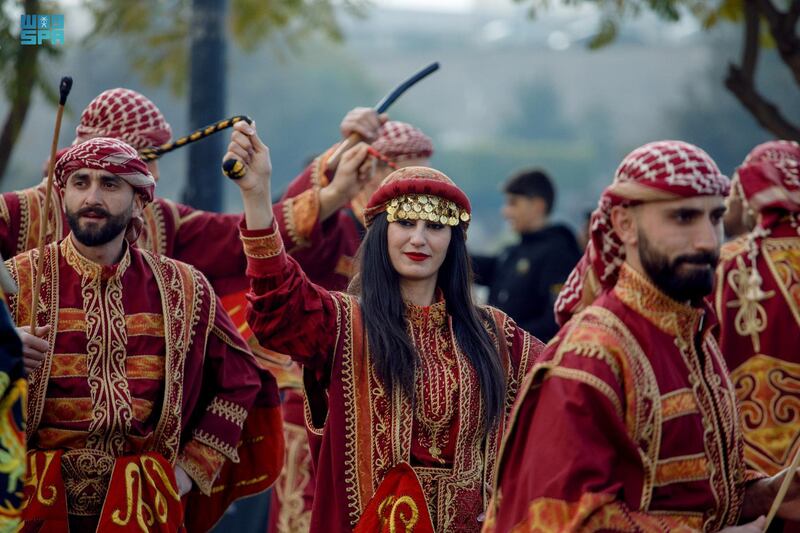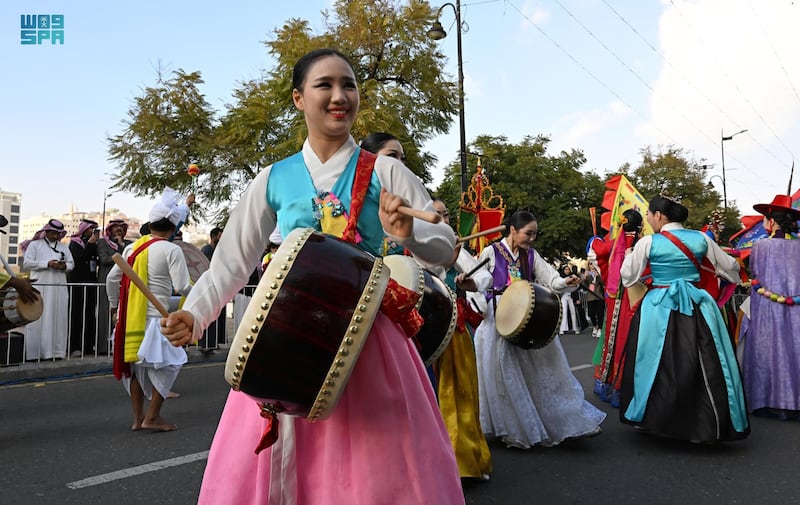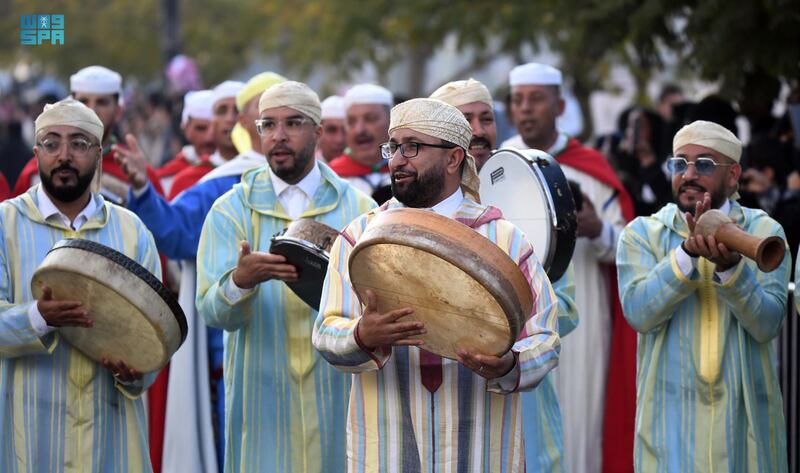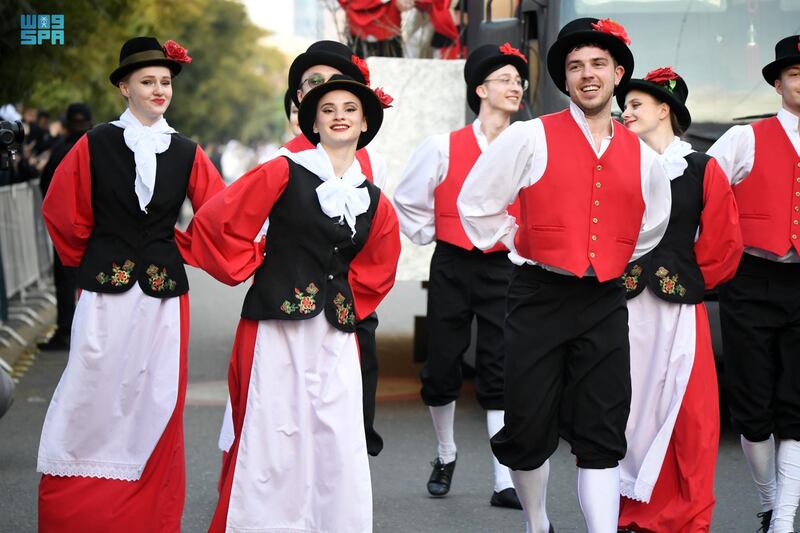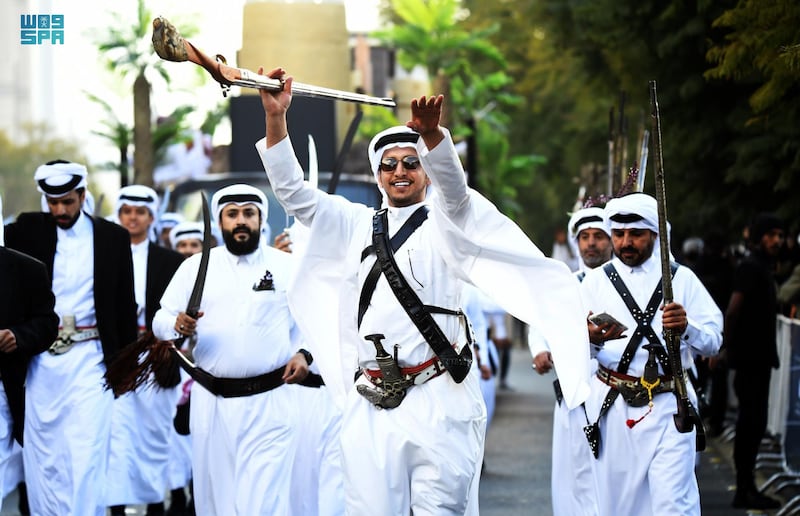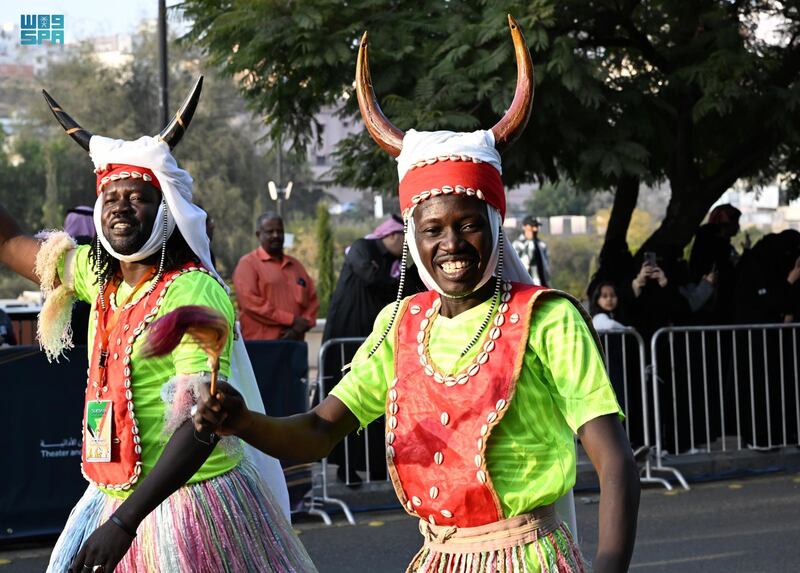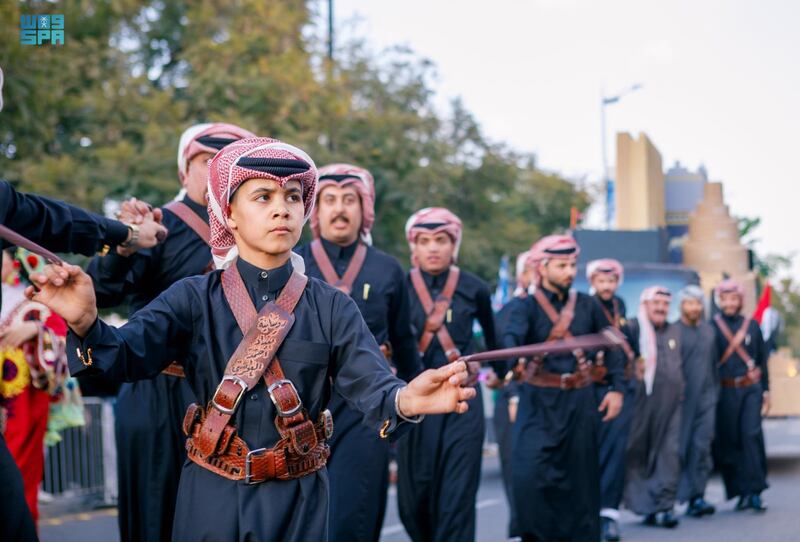The Qemam International Festival for Mountain Performance Arts showcased more than 32 performances from 14 international and 16 Saudi folk groups this weekend.
The festival, which is said to be the world's first dedicated to mountain performing arts, has had Saudi authorities open archaeological sites to the public for performances in Asir, including Malik Historical Palace, Al-Mushait Palaces, the Castles of Abu Nuqata Al-Mutahmi, Basta Al-Qabil, Abu Shahra Palace in Al-Masqi, Shamsan Castle and Bin Adwan Heritage Village.
The performances are taking place across these sites every day until Friday.
International traditions collide
Indian performers kicked off festivities on Saturday evening at AlMalik palace with Indian classical performances such as raslila, and the dance form cholom and martial art thang ta, both from the state of Manipur. All these performing art forms from the mountains are dedicated to love, human evolution and social rituals.
From Morocco, a group of singers and performers dressed in traditional garb treated crowds to popular songs and dances, including Obidat Al-Rama, transforming local poetry into catchy phrases and dancing with audience members.
Elsewhere, Chinese performers showed off with performances that represent the dragon, which symbolises power and dignity in China. They also performed another historic theatrical folk art in which performers wear long sleeves and mimic the flow of water.
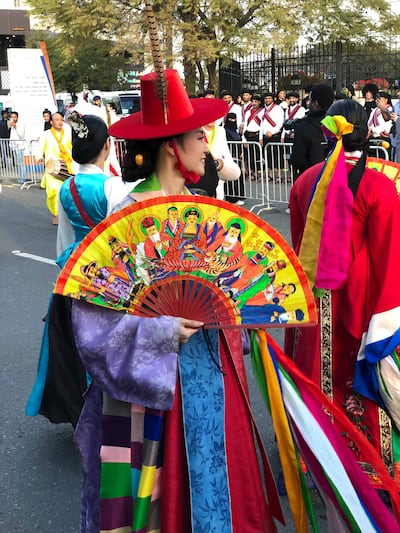
Performers from South Korea performed the Jindo Buk-chum, which shows appreciation for the mountainous regions, and Mudang-chum, which refers to the shamans who undertake mountain performances. The audience also saw a Seungmu, a Korean dance traditionally performed by Buddhist monks.
Scottish performances, meanwhile, included the highland dance, developed in the Scottish Highlands in the 19th and 20th centuries, which was formalised as a ballet and usually accompanied by the flute.
Performances from the Mena region
From the Mena region, Lebanese artists performed the traditional dabke, a folklore performance popular in weddings and grand celebrations.
Iraqi artists also performed Gobi, a Bedouin and rural dance performed by groups at weddings and festivals.
On behalf of North Africa, a group of Sudanese men dancing in sync performed the traditional Ardah dance.
Saudi Arabia was well represented, too, and local performances included an Al Khatwa dance, which represents the Asir region featuring more than 20 melodies.
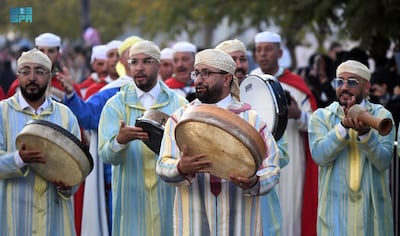
Other performances representing Asir include Al Qazaoui, which was used to celebrate victories in combat and is still sporadically performed on ceremonial occasions, and Al Dammah, featuring dancers facing another set of dancers, one tribe approaching another in a symbol of status and the strong influence of elders in communities.
Al-Rayeh, also from Asir, happens to the sound of drums as performers carry sticks while standing in two rows.
For the south-western Saudi city of Najran, there was Al Razfah Alsa'ab, a common folk dance performed in weddings and events. Each performer dances holding the arms and shoulders of the person next to them. While the first row reads couplets, the second row echoes them.
Representing Tabuk is Al Haraby art, symbolising chivalry and poetry, and performed with swords and sticks akin to most folkloric Saudi performances that highlight historical traditions.
Al Bahah, a city in the Hejazi area of western Saudi Arabia, is renowned for the Ardah and requires a poet or group with the zeer, a drum forged of animal skin.
What is the Qemam festival?
The festival is a “cultural spectacle dedicated to mountain performing arts”, Theatre & Performing Arts Commission chief executive Sultan Al-Bazie, tells The National.
“The festival creates numerous opportunities for intercultural exchange, allowing performers and visitors from across the kingdom and the world to learn about the similarities they share, as well as unique characteristics found in their expression of mountain performing arts."
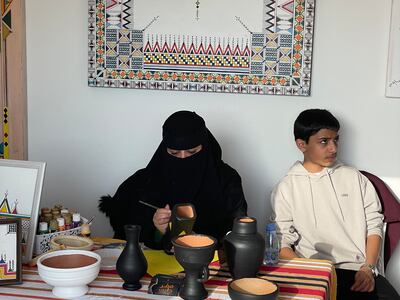
The eight-day festival features 32 performances by folk groups from India, China, Morocco, South Korea and Switzerland, aiming to explore the history, artistry and practice of mountain performing arts, highlighting the cultural significance of each group.
Also on display are traditional wedding dance performances, live cooking, alongside gifts and an artisans’ bazaar.
Women from Abha in Saudi Arabia have also set up food stalls selling traditional items such as haneeth (a dish with lamb), samboosa, Saudi coffee with saffron and cardamom, and fried snacks.
